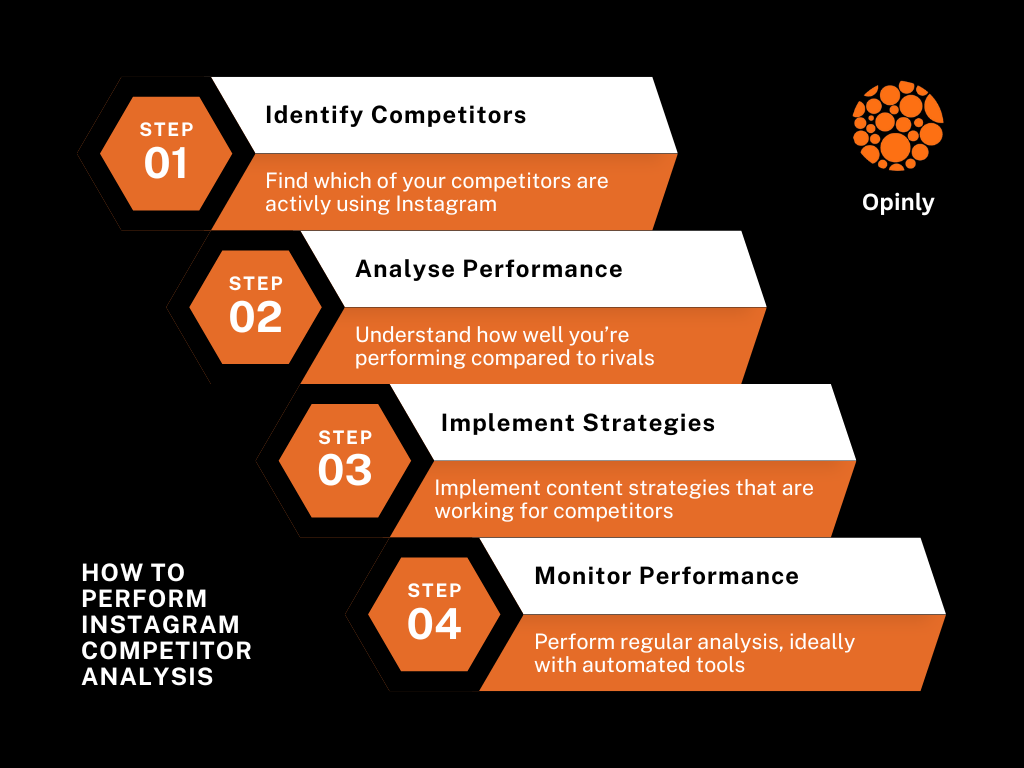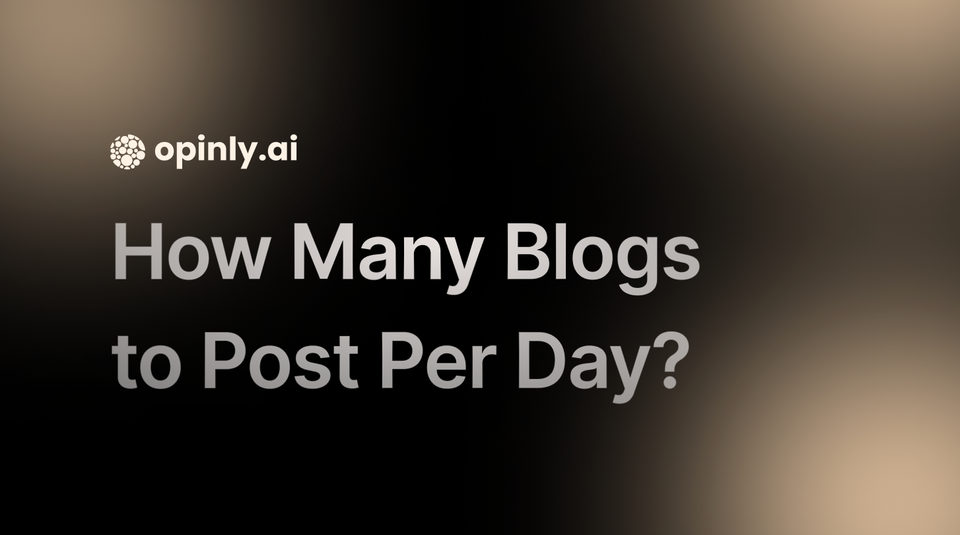What is Competitive Price Analysis and Why Does It Matter?
Learn how to conduct competitive pricing analysis to improve market positioning and profitability. Discover essential steps for identifying competitors, collecting pricing data, and implementing effective pricing strategies to stay competitive in today's dynamic market.

Setting the right price for a product can be challenging for any business. Many factors influence the best price, which must be determined to gain a competitive edge while ensuring a healthy profit margin.
Competitive Price Analysis involves systematically examining the pricing strategies of competitors to determine the optimal pricing for your products or services. It matters because it provides critical insights into market trends, customer expectations, and competitor behavior. - David McGuckin, Software Engineer
If you price too high, you might scare away customers. If you price too low, you could hurt your revenue and profits.
One common strategy businesses use is competitive pricing. This means setting your prices based on what competitors charge. It's a great starting point that can help your brand stand out, protect your market share, and grow.
This approach is essential for retail businesses. Since they often sell similar products, they need pricing as a critical way to attract customers.
However, effective competitive pricing requires thorough analysis and research.
This guide'll explore competitive pricing analysis and show you how to use it to outperform your competitors.
What is Competitive Price Analysis?
In competitive price analysis, large sellers with thousands of products face the challenge of ensuring competitive pricing across their entire inventory to maintain market competitiveness and maximize profitability.
Competitive Price Analysis is systematically comparing your prices with those of your competitors. It's crucial to analyze competitors' pricing strategies serving the same target market to identify pricing trends and ensure competitiveness in attracting and retaining customers.
This involves gathering data on the prices of similar products or services competitors offer and analyzing this price information to inform your pricing strategy.
It's important to closely observe how competitors price their products to understand market dynamics and strategically position our offerings for optimal competitiveness and profitability.
The goal is to understand the market landscape, identify pricing trends, and determine the best pricing strategy to attract customers while maintaining profitability.
Why is Competitive Price Analysis Important?

1. Understanding Market Position
Knowing how your prices compare to your competitors' lets you understand your position in the market. Are you a high-end option, a budget-friendly choice, or somewhere in between? This understanding helps craft marketing messages that align with your pricing strategy and serve the same target market.
- Defining Your Brand: Your pricing tells customers a lot about your brand. High prices can signal premium quality and exclusivity, while lower prices can highlight affordability and value. Understanding your market position helps you shape your brand image effectively.
- Targeting the Right Audience: Different price points attract different types of customers. Knowing where you stand in the market price allows you to tailor your marketing messages to appeal directly to your target audience. For instance, your marketing should emphasize quality and exclusivity if you're a luxury brand. If you’re a budget-friendly brand, you should focus on affordability and value.
- Strategic Marketing: Aligning your marketing strategies with your pricing helps create a cohesive message that resonates with your audience. This consistency strengthens your brand identity and makes your marketing efforts more effective.
- Competitive Edge: Understanding your market position allows you to spot opportunities and threats. For example, if you notice a competitor's pricing of their products, you can decide whether to adjust your pricing or highlight other unique selling points to maintain your competitive edge.
2. Identifying Opportunities and Threats
To stay ahead in the market, companies often implement a competitive pricing strategy, leveraging insights gained from competitive price analysis to set attractive prices to customers while maintaining profitability.
Regular competitive price analysis can reveal opportunities for pricing adjustments that can improve without losing market share. It can also help identify threats, such as a competitor drastically lowering prices, allowing you to respond proactively.
Competitive price analysis helps businesses identify their competitive advantage by comparing their pricing strategies with those of competitors. This enables them to leverage this insight to attract customers and differentiate themselves in the market.
Businesses must consider various pricing factors such as production costs, demand elasticity, competitor pricing strategies, and market conditions to determine the most effective pricing strategy that ensures competitiveness while maximizing profitability.
- Gaining Market Share: By monitoring competitors' prices, you can find opportunities to adjust your prices strategically. For example, if you notice that your competitors have slightly higher prices, you could lower yours to attract their customers and increase your market share.
- Introducing Promotions: Analysis might reveal that a temporary price reduction or a special promotion could capture a significant portion of the market. For instance, a well-timed sale or discount can attract price-sensitive customers, especially during peak buying seasons.
- Product Bundling: Identifying gaps in competitors' pricing can also lead to opportunities for creating bundled offers. Bundling products at a competitive price can provide added value to customers and set your offerings apart from competitors.
3. Optimizing Pricing Strategy
Competitive price analysis provides the data needed to optimize your pricing strategy decisions. This could mean adjusting prices to match or beat competitors', or it might involve highlighting unique value propositions that justify a higher price point.
- Matching Competitor Prices: By monitoring your competitors’ prices, you can adjust your own to match them. This ensures that potential customers view your products as a viable option. For example, if a competitor drops their prices, you might lower yours to stay competitive and attract price-sensitive buyers.
- Beating Competitor Prices: Sometimes, you might set your prices slightly lower than your competitors. This can give you a competitive edge, especially in markets where customers are highly price-sensitive. Offering similar or better quality at a lower price can increase your sales and market share.
4. Enhancing Customer Value Perception
By aligning your prices with market expectations, you enhance the perceived value of your products or services. If your prices are competitive, customers are more likely to see your offerings as a good deal.
- Consistency in Pricing: Consistent pricing helps build trust with customers. Sudden or frequent price changes can lead to confusion and mistrust. Customers prefer predictable pricing, which helps them make informed purchasing decisions.
- Customer Engagement: Engage with your customers to understand their perceptions of value. Solicit feedback and be responsive to their needs. This engagement helps align your pricing strategy with customer expectations and enhances overall satisfaction.
How to Conduct Competitive Price Analysis
1. Identify Key Competitors
The first step is to identify your key competitors. These businesses offer similar products or services and target the same customer base.
In a competitive price analysis, it's essential to assess both direct and indirect competitors to fully understand the market competitive landscape and make informed, intelligent pricing decisions. It's also essential to closely monitor and analyze competitor's pricing strategies to gain insights into market trends and ensure our pricing remains competitive and attractive to consumers.
In competitive price analysis, it's essential to consider your indirect competitors, as they may offer alternative solutions or substitute products that could influence pricing strategies and market positioning.
Direct Competitors:
- Similar Products or Services: Look for businesses that offer similar products or services. These are your direct competitors. For example, other athletic shoe brands are your direct competitors if you sell athletic shoes.
- Same Target Market: Ensure these competitors are targeting the same customer base as you. This means their products or services cater to similar customer needs and preferences.
Indirect Competitors:
- Alternative Solutions: Identify businesses that offer alternative solutions to the problem your product or service solves. While their offerings may not be identical to yours, they still compete for the same customer dollars. For instance, a gym membership could be an indirect competitor to a home fitness equipment retailer.
- Broader Market: Consider competitors in the broader market who might attract your potential customers. These might be companies offering complementary or substitute products.
2. Gather Pricing Data
Collect data on the prices of comparable products or services from these competitors. You can do this by visiting their websites, checking online marketplaces, or using pricing tools.
- Product Listings: Go directly to the websites of your key competitors. Check their product listings to see what they are charging for similar items. Pay attention to any discounts, special offers, or price variations for different product versions.
- Details Matter: Note additional costs like shipping fees, taxes, or handling charges. Understanding the full cost to the customer helps you make accurate comparisons.
3. Analyze the Data
Analyze the collected pricing data regularly to identify trends and patterns. Look for price ranges, average prices, and unique pricing strategies such as discounts or bundled offers.
It's essential to evaluate the overall pricing strategy, considering cost, value perception, and market positioning factors, to ensure our pricing aligns with market dynamics and effectively differentiates us from competitors.
Price tracking is a crucial component of competitive price analysis, as it allows businesses to continuously monitor changes in competitors' pricing strategies and adjust their own pricing accordingly to maintain competitiveness in the market.
4. Adjust Your Pricing Strategy
Based on your analysis, adjust your pricing strategy. This could mean setting your prices lower, higher, or at par with competitors, depending on your market price positioning and business goals.
Tracking the price index allows businesses to monitor changes in the overall pricing levels within the market, providing valuable insights into the competitiveness of their pricing strategies relative to industry standards and competitor offerings.
- Price Ranges: Begin by categorizing the collected data into different price ranges. This can help in identifying the spectrum of prices available in the market. For instance, categorize prices into low, medium, and high ranges.
- Average Prices: Calculate the average price within each category and overall. This provides a benchmark to compare individual items or services against the market average.
Benefits of Effective Competitive Price Analysis

Here are some of the benefits of competitive price analysis:
1. Improved Decision-Making
Having detailed pricing insights allows for better decision-making when it comes to setting and adjusting prices. It helps in making informed choices that balance competitiveness with profitability.
- Dynamic Pricing: With real-time data, businesses can implement dynamic pricing strategies. Prices can be adjusted based on demand, competition, and other market factors. This ensures that prices remain competitive data and aligned with current market conditions.
- Seasonal Adjustments: Understanding seasonal trends allows businesses to adjust prices during peak and off-peak periods. For instance, raising prices during high-demand seasons can maximize revenue, while offering discounts during off-peak times can boost sales.
2. Increased Sales and Market Share
A well-executed pricing strategy can lead to increased sales and a larger market share. By offering competitive prices, you attract more customers and potentially convert them from competitors.
- Market Penetration Pricing: Introducing a new product at a lower price point can help quickly gain market share. Once the product is established, prices can be adjusted to reflect its value and demand.
- Price Skimming: For innovative or high-demand products and pricing data, businesses can initially set higher prices and gradually lower them as competitors enter the market. This strategy helps in maximizing revenue from early adopters and then capturing more price sensitivity customers.
3. Better Profit Margins
In competitive price analysis, the need for thorough market research and strategic pricing adjustments doesn't come without diligent effort and careful consideration of various factors influencing consumer behavior and competitor strategies.
Effective price analysis helps in identifying the optimal price points that maximize profit margins while remaining attractive to customers. This balance is crucial for long-term financial health.
- Cost-Plus Pricing: Understanding the costs involved in producing and delivering a product or service allows businesses to set prices that cover costs and ensure a profit. By adding a consistent markup to costs, businesses can maintain healthy profit margins.
- Value-Based Pricing: Analyzing how much customers are willing to pay based on the perceived value of the product or service can help set prices that maximize profits. This approach ensures prices reflect the true value to customers, often resulting in higher profit margins.
Conclusion
Conducting thorough market research is the first step in competitive pricing analysis, providing valuable insights into competitor pricing strategies, consumer preferences, and market trends, which are essential for making informed pricing decisions.
In competitive price analysis, it's crucial to strategically position our product by thoroughly assessing market dynamics to ensure we're pricing it effectively to maintain competitiveness while maximizing profitability.
Competitive price analysis is an essential practice for any business looking to thrive in a competitive market.
By understanding and strategically responding to competitor pricing, businesses can enhance their market position, optimize their pricing strategy, and ultimately drive better business outcomes. Meticulously pricing a product involves scrutinizing the offerings of rival companies to determine the optimal balance between competitiveness and profitability in the marketplace.
Regularly conduct a competitive price analysis to ensure that you remain responsive to market changes and customer expectations, positioning your business for sustained success.
Frequently Asked Questions
1. What is competitive analysis and why is it important to implement a competitive pricing?
Competitive analysis is the process of identifying and evaluating your competitors' strengths and weaknesses. It's important because it helps businesses understand the market landscape, identify opportunities for improvement, and develop strategies to outperform competitors.
In competitive price analysis, conducting a thorough competitor pricing analysis can help in understanding market dynamics and identifying opportunities to adjust pricing strategies effectively. It's imperative to strategically adjust our pricing strategy to beat out the competition while maintaining profitability and market share.
2. What is competitive pricing and why is it important?
Competitive pricing data is the strategy of setting prices based on what competitors are charging. It is important because it ensures that your prices are attractive to customers while remaining profitable.
By aligning your prices with market research standards, you can attract more customers and stay competitive. Pricing strategies may vary depending on the product type or market segment, with some segments requiring premium pricing for specialized products while others may be more price-sensitive and demand competitive pricing.
3. What is competitive price analysis?
Competitive price analysis involves researching and comparing the prices of similar products and services offered by competitors. This analysis helps businesses understand market trends, set optimal prices, and identify opportunities for pricing decision adjustments to maximize profits.
In a competitive price analysis, historical data-driven insights provide valuable information on past pricing strategies and market trends, enabling businesses to develop effective pricing strategies and stay competitive in the market.
4. What is competitive sales analysis?
Competitive sales analysis examines the sales strategies and performance of competitors. It helps businesses understand what drives their competitors' sales, identify effective sales tactics, and uncover potential areas for improvement in their own sales processes.
Businesses rely on historical data to evaluate past pricing trends, assess competitor strategies, and make informed decisions about adjusting their own pricing strategies to stay competitive in the market.
5. What is the meaning of price competition?
Businesses aim to adjust their pricing strategies to remain competitive without losing profitability or market share. Price competition refers to the practice of competing with other businesses primarily on the basis of price.
In markets with price competition, many businesses strive to offer the lowest prices or best value to attract customers. This often leads to lower profit margins but can increase market share and sales volume. In a competitive price analysis, businesses may strategically offer a loss leader, a product sold at a loss to attract customers and stimulate sales of other profitable products within their portfolio.
Businesses rely on a data-driven strategy to analyze market trends, competitor pricing, and customer behavior, enabling them to make informed decisions and stay competitive in the market.
Optimize Competitive Pricing Strategy for Maximum Profit with Opinly AI
Effective price analysis is essential for identifying the optimal price points that maximize profit margins while remaining attractive to customers.
This balance is important for ensuring long-term financial health and sustainability.
For the best competitive accurate pricing data analysis, choose Opinly AI.
Our advanced tools and insights help you stay ahead of the competition, set optimal prices, and maximize your profit margins.
With Opinly AI, you can make informed decisions that drive your business forward. Get started with Opinly AI today and see the difference!




